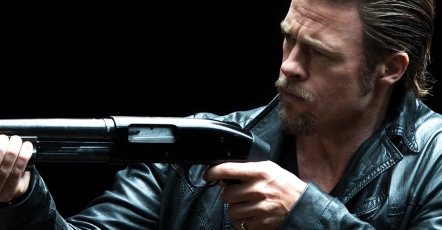The Kiss of Intertext
Posted: October 15, 2012 Filed under: Oldies Leave a comment


La Pointe Courte (dir. Agnès Varda, 1955)
Love and Death (dir. Woody Allen, 1975)
Mulholland Dr. (dir. David Lynch, 2001)
“Holy Motors”: There will be time to prepare a face to meet the faces that you meet…
Posted: October 2, 2012 Filed under: Uncategorized Leave a commentLeos Carax’s first film in over thirteen years, ‘Holy Motors,’ loomed authoritatively over Cannes earlier this year. Assessments of the film were sharply divided: while some saw a hollow, vacuous and largely incomprehensible plot, others relished its healthy injection of lucid idiosyncrasy into a screening list which favoured auteur miserabilists.
With Carax’s baroque imagination raising more questions than answers, we follow Monsieur Oscar (Denis Lavant), a protean everyman who works as a professional chameleon, as he rides a white limousine stuffed with suitcases full of disguises in order to fulfill nine surreal ‘appointments’ (excluding the accordion-driven entr’acte). This conceit allows Carax to structure the film around a series of self-contained chapters (or narrative dead-ends, take your pick). And indeed much of the film’s impressive power comes from Denis Lavant’s commanding performance, which lifts each delirious episode of the film’s timeless structure with the expressive candidness and thoroughness necessary to breathe life into the motif of multiple identities. On a few occasions Lavant feels like a contemporary Chaplin, a beady-eyed leprechaun running amok in the weird and wonderful world of mercenary aesthetics. And why? For the “beauty of the act,” he says. Life is a performance.

With willfully obscure moments that can only elicit a “Sure, why not?” reaction, the spectator is given an emotional buffeting from the shifts and endless surprises, the least of which is Kylie Minogue’s acting ability in one tremendous scene. But as Carax hops genres and self-consciously lifts visual ideas from classic films, I found the occasional element of his pastiche a little too empty: let’s be honest, the thrill of witnessing Édith Scob don the mask from ‘Eyes Without a Face’ is just mere recognition rather than a more meaningful recontextualisation. It is fortunate, then, that ‘Holy Motors’ and its fearless sense of movement is able to overcome such lapses and continue to thrash around in the reflective subconscious.
“Killing Them Softy”: Amoral exhaustion
Posted: October 1, 2012 Filed under: Reviews Leave a commentA second portrait of down-and-out America, Andrew Dominik’s ‘Killing Them Softly’ is a frostbite satire about men and decision-making in darker times. He burns the gloss and glamour off of Scorsese-inflected gangster myths with an economic allegory of the 2008 financial crisis and its political gamesmanship. We follow two street hoods (Scoot McNairy and Ben Mendelsohn) after they ‘turn over’ an organised card game and their pursuit by Jackie Cogan (Brad Pitt), a hitman sent to exact justice and restore “confidence”.

The recurring grey-black-brown colour scheme and vintage 70s style (check: cars, clothing, lingo) connect the present United States with a past moment in their history equally maligned with economic and political duress. The slow-motion shots only heighten this spatial overlap. But though it is refreshingly free from the Warner Bros. romanticism that plagues crime thrillers (favouring to portray the banal monotony, rampant misogyny, and alcoholism of the underworld business instead), ‘Killing Them Softly’ and its substantial subtext still lacks the discernible edge to make the skin crawl or even invoke a stronger reaction one way or the other.